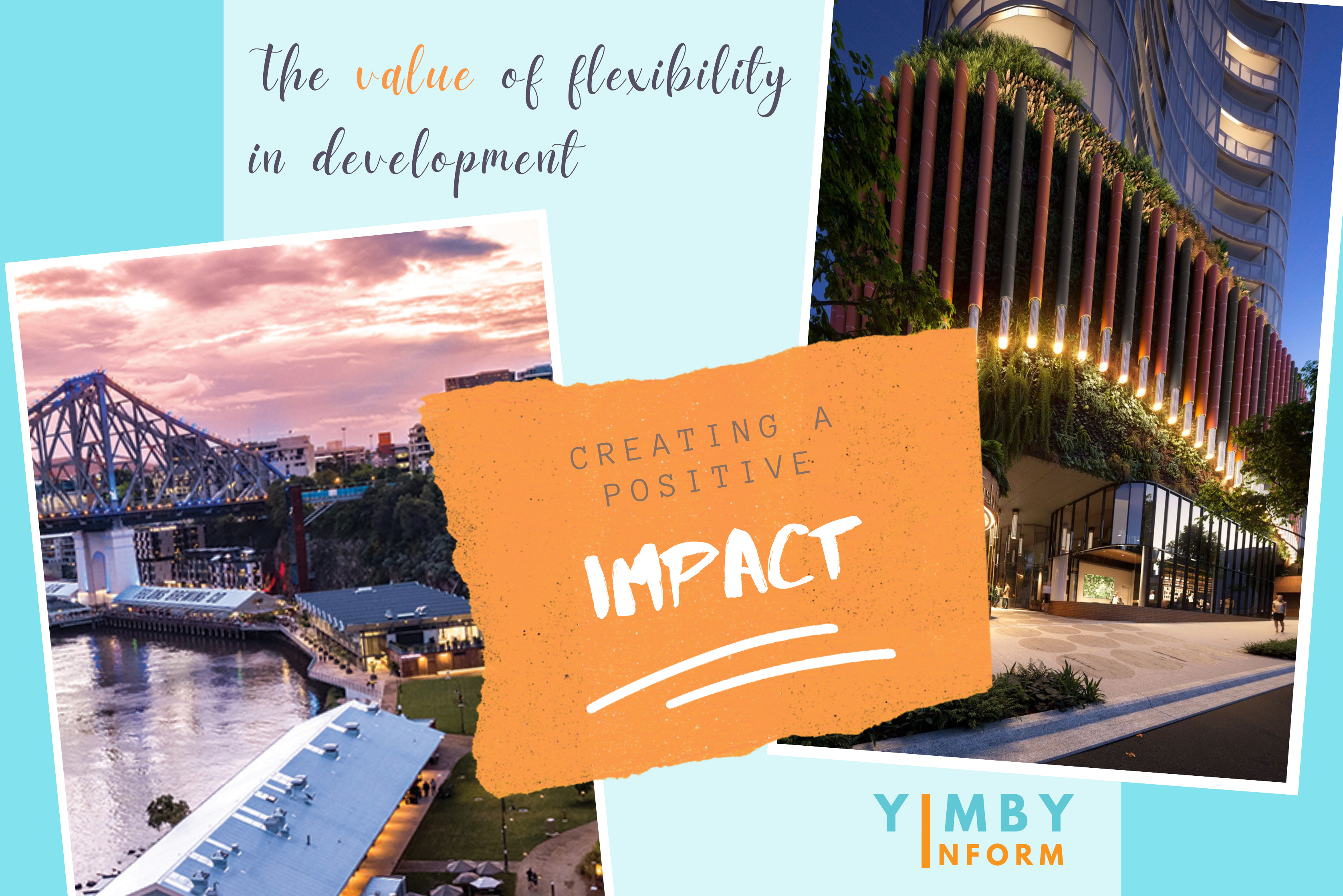The value of flexibility in the Planning decision making process.
Ever wonder why your pesky neighbour got away with building 3-storeys when the rules clearly state a maximum of 2? Here we look at why Development Controls are and should be used as guidelines, more than strict limits or controls.
When it comes to our built environments, we have a responsibility to ensure what we are building is effectively supporting our current needs and wants, without hindering the needs and wants of those around us and those to come.
Easier said than done.
As I’m sure we can all share some horror stories of development-gone-wrong, it’s important to celebrate the quiet heros who push development boundaries, think outside the box and manage to get development oh-so-right!
Think Urban Forest by Aria or Howard Smith Wharves, the Rochedale urban community because of the Emerging Community zoning, or doggy daycare centres not quite envisaged by the planning scheme, a gym or café in an industrial employment area despite workers needing these services, or the disrupters like AirBnB or Kerb (a shared parking platform where people can rent out their garages or driveways).
Development like this wouldn’t be possible without flexible decision making, guided by our development frameworks and approved within the legal framework.
In a recent case, District Court Judge, Her Honour Judge Nicole Kefford, provides a straight forward explanation of the value of flexibility in the Planning decision making process, by explaining the context. We agree, Context is everything. It shapes the meaning in communication. It must be integral to genuine community conversations about Planning, it’s complexities and challenges.
In a Planning and Environment Court Judgement (QPEC19-046) of October 2019, Her Honour Judge Kefford says: “Development may differ from the planning controls but be compatible with, ancillary to, or designed to complement the planning outcome sought by the planning controls, or otherwise advance the needs of a community in a particular area without undue adverse town planning consequence, because of its own merits and the particular combination of facts and circumstances relevant to it”, referencing Martin Dillon & Associates v Townsville City Council (1981) 2 APA 134, 139-40.”This underscores the importance of flexibility in the decision-making process”.
“Blind adherence to that part of a planning scheme that is rigid is apt to obscure the fact that the need and the wellbeing of the community, or a significant part of it, may sometimes be better served by permitting an outcome that does not strictly comply with those controls. That flexibility may, in some instances, better serve the interests of the public is apparent when one considers the complexity of the task confronting a local government in preparing a planning scheme”.
The context behind this statement is important, which in summary highlights these three key points:
- Planning decisions are multifaceted. Planning schemes inform:
- Public investment decisions (eg. the delivery of infrastructure)
- Private investment decisions (eg. where we live) and
- Business investment decisions (eg. where corporations will invest for commercial return)
- Planning schemes are drafted without the benefit of a particular development option or design. A local government could not possibly foresee every combination of controls that might apply, and their impact on every potential development scenario that individuals may seek to advance on every site across its local government area.
- Planning decisions are inherently a balancing exercise. They must strike a balance between the maintenance of confidence in a planning scheme on the one hand and dynamic land use needs and recognition that town planning is not an exact science on the other.
At YIMBY Qld, our strongly held view is that without flexibility, innovation is stifled. While so called ‘tick and flick’ code compliant developments can result in good outcomes, they can equally easily reflect mediocrity. In our experience, it is more often than not that the ‘out of the box’ solutions lead us towards a better future, showcasing new technologies, disruptive ideas and improved sustainability practices. These are the outcomes that fuel our inspiration.
It’s true, with flexibility comes uncertainty and of course some mistakes. But humanity is constantly learning and growing. We don’t know what we don’t know but we can certainly strike a balance between teachings of the past and ideas of the future. For that, however, we need flexibility.
Please join the conversation by adding comments, examples or matters for further discussion and tag #yimbyqld #planninginfo #communityconversation



